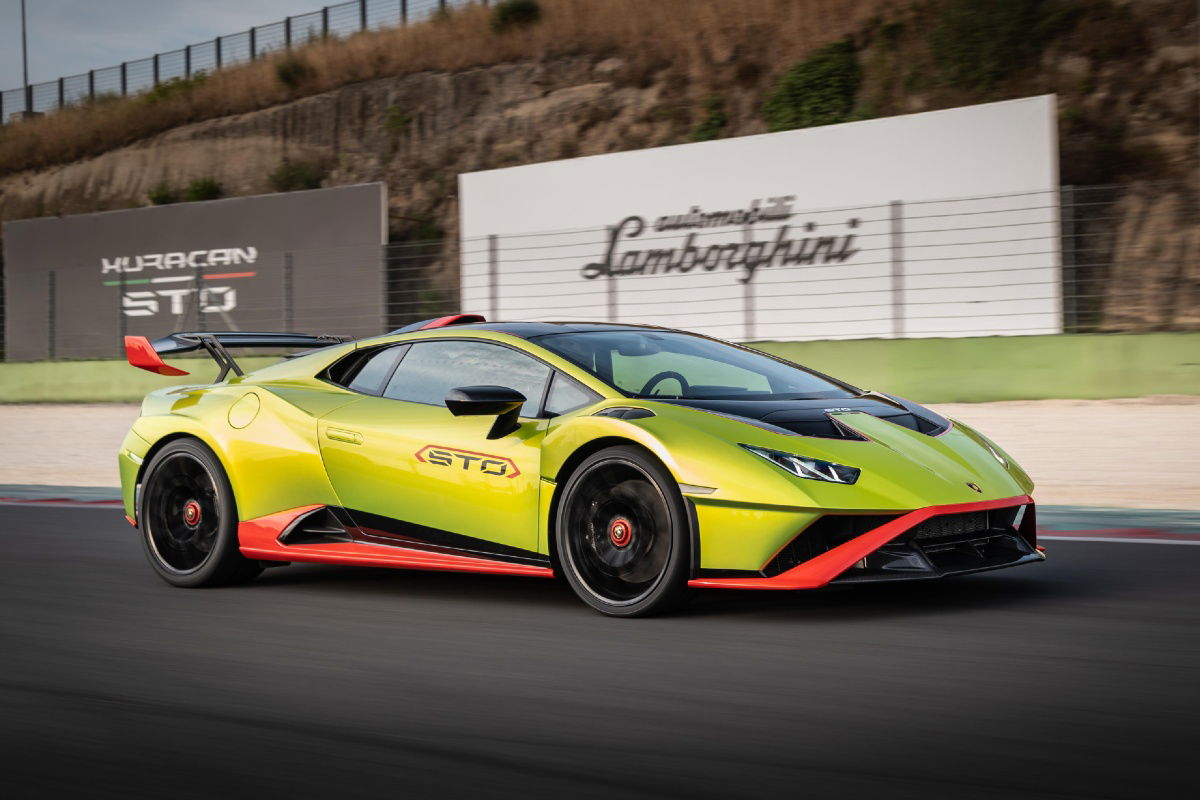
Lamborghini is targeting its fourth class victory in the 24-hours of Daytona this weekend and the Italian brand is bringing back the old adage of ‘win on Sunday, sell on Monday’ with its latest road-legal supercar.
Lamborghini has stepped up to the newly-introduced GTD PRO category at Daytona, fielding a Huracan GT3 with factory aces Marco Mapelli, Mirko Bortolotti, Andrea Caldarelli and Rolf Ineichen driving. The company has won the Pro-AM GTD class three times at the famous US race and has used that as inspiration for the final road-going iteration of the Huracan – the STO.
The Huracan STO is due to arrive in Australia later this year, nearly two years after its initial unveiling, bringing with it the closest connection between a race car and road-going supercar in the company’s history.
Maurizio Reggiani, chief technical officer for Lamborghini, has explained how the company has applied lessons learnt on the track, with both the GT3 version of the Huracan and the one-make Super Trofeo racer, to evolve the Huracan beyond the already-rapid Performante supercar.

The key, according to Reggiani, is the aerodynamics and specifically the balance between the front and rear of the car, as well as the trade-off between downforce and drag and the need for cooling for consistent track-day performance.
“One of the most important elements we take from motorsport is the aero-balance,” Reggiani said. “We try to take the same [aero] map we have in Super Trofeo, the map as GT3 and put into the STO… [so we have the aerodynamics] perfectly balanced in every condition – in terms of straights, in terms of cornering and in terms of stability when you brake and accelerate.”
This meant a major redesign of the Huracan, including changing the entire front-end with an all-new, one-piece clamshell bonnet that was directly inspired by the GT3 machine. There’s also an adjustable rear wing and an air-intake with stabilizing fin that runs down the rear of the car.
Lamborghini chief designer, Mitja Borket, said the design was a collaborative process between the designers, engineers and the race team drivers.

“The design team is always taking influence from the racing world – we love the racing cars,” Borkert said. “But it’s also about the feedback we are hearing from the race department – Squadra Corse and the racing drivers.”
The fin is one of the most direct pieces of feedback from the drivers, with them convincing the design team of its merits in improving the performance of the car.
The STO (which stands for Super Trofeo Omologata) is available with adjustable downforce settings, high, medium and low, as well as the ability to move the centre-of-pressure by 13 per cent – both learnings taken directly from racing.
Reggiani said that in total the STO has 37 per cent better aerodynamic efficiency than the Performante, with a maximum downforce of 420kg at 280km/h.
The STO is the send-off for the Huracan, with a replacement for Lamborghini’s ‘entry-level’ supercar due to launch in 2022; with the model having been on sale since 2014.













Discussion about this post